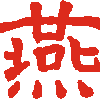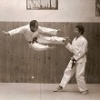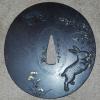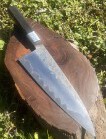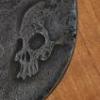-
Posts
2,216 -
Joined
-
Last visited
-
Days Won
42
Jussi Ekholm last won the day on January 4
Jussi Ekholm had the most liked content!
About Jussi Ekholm

- Birthday 12/29/1988
Profile Information
-
Gender
Male
-
Location:
Tampere, Finland
Profile Fields
-
Name
Jussi Ekholm
Recent Profile Visitors
Jussi Ekholm's Achievements
-

Juyo and Tokubetsu Juyo numbers
Jussi Ekholm replied to MassiveMoonHeh's topic in General Nihonto Related Discussion
I have posted some of them but credit of this file goes to @Wim V as he posted this amazing file few years ago -

Need help identifying and getting do's and don'ts for this blade
Jussi Ekholm replied to majorFALfan's topic in Nihonto
As others said above it would seem to be very promising sword for possible restoration. I like the shape of your sword and I believe it has potential to be very good sword after proper restoration. -
I am appreciating even the older papers for regular items. If you have extremely high level mumei sword or signed item by famous smith it is of course advisable to upgrade them. I do think most of the shinsa attributions have always been made with good intentions. However the knowledge has evolved with time and some things are maybe seen differently in current study. I do love my sword books and magazines, however as was said that in 50 years knowledge advances. I have some 50 year old books that have some errors, I think I have some about c.100 year old books that might have even more incorrect information but that information was of course thought to be correct at that time it was written. I think sword in the first post could likely be a katana by Muromachi Kongōbyōe Moritaka. I could very easily see the modern NBTHK papering it with just the signature mentioned in the paper. To me personally this would not add too much value. However if NBTHK would specify the period in paper in brackets, that would be a huge plus. Unfortunately it is not guaranteed that they will specify anything in the paper. As I believe Kongōbyōe Moritaka lineage goes from Nanbokuchō up to early Edo, having some specification in paper would be preferable, instead of them just awarding the paper and stating there is a signature Minamoto Moritaka. Just a personal feeling that NBTHK papers have become hugely impactful to the market, their opinion is pretty much the only organization that carries weight and there can be huge spikes in prices for attributions that market wants. I don't think it was like that back in the day. I cannot really read all the articles at Tōken Bijutsu magazines with my language level but I have used translators for some to get decent results. I have heard the Hozon & Tokubetsu Hozon shinsa are fully booked now that they put on limits for items accepted and there is nothing written out on the results. Some of the early magazines feature full lists of items that passed the early Kicho shinsa, like you see modern Jūyō results featured in the magazine. And on some occasions in some articles even some of the items were mentioned what had possibly been the interesting items of the session. I just wish there would be few more swords featured in the monthly magazine, of course they do probably run a very strict standard and rules for their articles etc.
-

Thoughts on a promising blade with soshu-den influence
Jussi Ekholm replied to BjornLundin's topic in Nihonto
I think the kissaki must have been worked to it's current form long time ago, and the polisher now probably just maintained it's form. Identifying the small details is always difficult to me but I think the two red arrows in your second post could be uchinoke (https://markussesko.com/2015/05/29/kantei-3-hamon-boshi-1/) I am liking Rohans and Kirills opinion about Yamato vibe. -
First of all, this is purely for fun, as the sword is mumei and ō-suriage (at least in my opinion) there is not really a single correct answer. I just thought it would be fun to do stuff like this to get forum members having fun and participating. Nagasa: 72,0 cm Sori: 1,2 cm Motohaba: 3,6 cm Sakihaba: 3,1 cm Motokasane: 6 mm Sakikasane: 5 mm Kissaki: 11,5 cm Nakago: 17,7 cm Weight: 956 grams Shinogi-zukuri, mitsu-mune Ji: Itame mixed with nagare, lot of nagare on shinogi-ji Hamon: Midare with gunome and togari elements, sunagashi and some nie Bōshi: Midare komi with fairly long kaeri because of kissaki length. This is an ō-suriage mumei sword with extremely wide width and no noticeable taper. Sori is very shallow and the sword has very large ō-kissaki. I tried to take photographs of the hataraki but unfortunately my pictures are not that great. They pop out so much more when viewed with naked eye towards the light source. The current polish is actually dulling the features a bit, and unfortunately the sword is not of super high quality. And I am not really the correct person to identify small details as they are not my forte. I will post the NBTHK judgement in one week 6.1. I hope everyone interested will have fun time guessing.
-

A little "kantei" game
Jussi Ekholm replied to Laurian's topic in General Nihonto Related Discussion
I just realized I had taken that picture over 5 years ago. Honestly I don't know what the lines are, I have just thought it is more visible portion of hada for some reason. I took few pictures just now, in this sword you can see the squiggly line is at the end of bit openish nagare hada portion. I remember in the first picture I posted I wanted to try to take picture of the good hada and not this lower portion. Metallurigical things are way out of my league but I do think it is possible that the rougher nagare parts that show up on few portions of this worn down sword are core steel, and the fine hada that is on the majority of the sword is the surface steel. I also took a picture now that shows few more squiggly lines closer to the tip. It may not show up in the pictures but the sword is extremely wide. I personally believe it is ō-suriage ōdachi and the hi is added on later. Unfortunately the bōshi is missing as the hamon runs off, so the kissaki has been much bigger in it's original form. -

A little "kantei" game
Jussi Ekholm replied to Laurian's topic in General Nihonto Related Discussion
That is very interesting. I don't know that much about details of Hokke and don't know the kantei features of the school so well. But it was nice I got close with Ko-Mihara guess. I actually have blade that has old papers to Hokke Ichijō and it has portions that have nice fine looking hada. Unfortunately my photography is awful... -
Here is for sale something you don’t encounter every day, Nanbokuchō period naginata. As many might know ōdachi and naginata are my main thing in collecting and research. I am not too happy to sell this one as finding Nanbokuchō naginata is very difficult. However, I will try to save up towards something better so I need to let this one go. This is in no means a perfect piece and it has been shortened but it still remains as a naginata. It has few flaws which can be seen in pictures but also parts of this have quite nice workmanship and interesting activity in hamon. NBTHK has attributed this to Ko-Uda, and I would think this would be Nanbokuchō work. I believe this naginata has been shortened around 25 cm from its original blade length that would have been around 75 cm. As can be seen in the pictures the original naginata-hi is only on the nakago with soe-bi continuing small portion into current blade. I have really enjoyed owning a shortened naginata like this that is not a naoshi, these are quite rare to come by at this length of shortening. It is far more common to find slightly shortened ones. The NBTHK Hozon papers show the item as naginata and attribution to Ko-Uda. I am not that good in kantei as I don't focus on the smaller details that much, I prefer the bigger picture. However, I can understand how NBTHK went with this attribution. There is lots of interesting activity in the blade but I think the Ko-Uda attribution is fitting as this item might be lower quality in overall. There is also a piece of the item missing on the mune. It is about 2cm in size. I tend to think it could be battle damage but it is impossible to tell for sure. It could be someone dropped it to stone by accident in 1980's Japan etc. I know many dealers would tout battle damage view and I understand it in business field. I feel the picture with flaw shows also some blade details quite nicely, I am not really good photographer and only have my phone to take pictures. I would believe this one has lost the original shaft it has had and someone made this shirasaya style shaft for this. The saya is what I believe is called Raden, it has some pieces that have flaked off and it is in worn condition with small split near the tip area. Unfortunately, I don't think in this price range professional restoration would be feasible. It has two piece copper habaki, it is plated to make it golden color. Nagasa: 49,4 cm Sori: 2,2 cm Motohaba: 3,1 cm Motokasane: 5mm Nakago: 42,5 cm Weight: 865 grams (blade) Tsuka: 87 cm Total: 127,5 cm In saya: 130 cm In overall I think this is interesting item. Definitely this is not the best item out there but I think it is a cool very old naginata, and they are hard to find. I've been tracking them down when they appear for 10+ years now. I tried to put some interesting images in the sales ad. I do have lots of more on my computer and I can take any pictures that are wanted. I needed to reduce the size of pictures a lot to forum, here is a link to a dropbox with full sized pictures. https://www.dropbox.com/scl/fo/uoojaq9z0u2sukoingnky/AFdEMoQUVW2_45g-rHbXdws?rlkey=1fmzk5iuusccggb3rb2w1h2ha&dl=0 I would prefer bank transfer as the method but can also accept PayPal. Message me and I will check the postage costs to you. One thing that is needed that I can send 150 cm package to your country by Finnish Post. Price: 3000€
-
- 13
-

-

-
Well I admit years ago I used to think that in order for one of the great sword teachers to write a sayagaki the sword would have to be absolutely spectacular. Now with more years under my belt I've understood that is not the correct view as there are blades of varying quality that have their sayagaki. Well of course the top and higher class swords are better represented as they are the swords people most likely would want to show to the teachers. Few years ago I started putting a note if the sword has a sayagaki for my data. However that is just for swords until roughly to mid-Muromachi. So everything that is Middle Muromachi period or later I have skipped, which means a lot of sayagaki that I have seen for example in very good late Muromachi and Edo period swords. Still I am bit surprised the numbers I have even gotten so far, as I think I have just small amount of their sayagaki and they have written so many more (I am just scratching the surface of Kunzans Kantō Hibishō series and I do think the series has 2,500+ swords in total). Tanobe - 481 sayagaki Kunzan - 439 sayagaki Kanzan - 167 sayagaki While there was really not a specific point for the thread I am just curious if for example someone would have asked from Tanobe or if he even knows how many sayagaki he has written, as it must be quite large number. I do think having sayagaki from them would be extremely valuable addon to the sword. Of course that value aspect can also introduce some shenanigans like Rohan said fitting a different sword to the shirasaya, or then faking the sayagaki, and other stuff too like alterations. In Kantō Hibishō Kunzan writes in 1969 for a Tegai Kanenaga tachi that last year he wrote a sayagaki for it and in it mentioned it was saiha but seeing it again someone had erased those letters from sayagaki.
-
I think one bit difficult thing to grasp is that Japanese experts often identify unsigned work towards a specific maker. I am not a huge fan of that but after being in the hobby for so long I have learned to live with it. It gets often very difficult when the smiths are rare to find. Sometimes it is relatively easy to find say 25+ signed items by the smith and do some comparisons etc. I do have massive reference library at home (Although I do focus on old swords) and of course Internet in use too. However in my books I can only find that 1 Jūyō example in few books and then this from online as verified item with quick search: https://ginza.choshuya.co.jp/sale/gj/r6/012/14_yoshikuni.php When it is difficult to find reference items it always makes me wonder how the experts can arrive to the attributions they give. Of course they have seen and handled thousands and thousands of swords and have the expertise. To me it would look attribution to Horikawa school in general would be totally plausible one. Well I think the Japanese experts don't give out such a broad and general attribution, and it will always be much more specific. In this case towards Horikawa Yoshikuni. However I think you got nice and big hirazukuri wakizashi. Please post more pictures when you have time, of the blade and sayagaki too (would be nice to see the date of it).
-
Welcome to the forum Richard. I think your photography looks very good, however I think for identification purposes I think you would need to post several of your pictures in higher resolution pictures so details can be seen. Many members of forum are very good at identifying fine details in blades and can offer assistance on that. I am not that good at that but my focus is on blade size and shape. Your sword is extremely shallow in curvature, it being 0,8 cm. To me in overall I might go more towards possibly Muromachi period just looking at the shape of the sword. There are few late Kamakura shortened blades that have under 1 cm of curvature remaining but they are very few in number. Posting lot more pictures would be very important for identification and guess the possible origin. There seems to be good looking hada on the middle blade picture for example, and seeing better pictures like that would be great.
-

Thoughts on a promising blade with soshu-den influence
Jussi Ekholm replied to BjornLundin's topic in Nihonto
Here is what I would see in two kissaki pictures, I tried to put in a red line to highlight what I am seeing. Not sure that is what actually is happening on the sword but I would see kissaki been repaired and there is a portion where hamon gets very close to edge. Have you measured the sori, motohaba, sakihaba and nakago length? I am not that good on identifying the fine details in blades but I think I can do decently with numerical measurements. It looks to me there are good looking portions of the blade and some portions are looking bit weaker but in overall there seems to be lot of interesting activity on the blade. -

A little "kantei" game
Jussi Ekholm replied to Laurian's topic in General Nihonto Related Discussion
It is very difficult to say as I am often struggling to understand the fine differences. I would think these both are Yamato style swords and would be from late Kamakura - Nanbokuchō period. For the first sword I would guess Tegai. My reasoning for that is that the 5 mainline Yamato seem to have their own small differences. To me Tegai would seem logical as for Taima I would expect tighter and "finer" jigane. Shikkake I would expect to see bit different hamon activity. Senjuin would have more "rougher" feeling to me personally and for Hoshō there would be so strong masame. For the second sword I would guess Ko-Mihara. This one maybe does have bit tighter hada to my eye, however it does not seem like Taima level quality in overall as it seems bit weaker in presence than the first sword. My explanation of my thoughts might be difficult to grasp as it is difficult to put it in words. So I will go for Ko-Mihara on this. Honestly I could throw the same Tegai guess for this one too. I would not have guessed that either of these swords are Jūyō but if one is then I think it is the 1st sword. -
Congratulations of the purchase. As I wrote in the other thread I think the Kanzan sayagaki can very well be plausible. As a reference here is a sword from Jūyō 21 by this smith. Of course with searching you can find other examples as well. And then see how and why the attribution to this smith might have been made. Or just end up scratching your head like happens to me often


